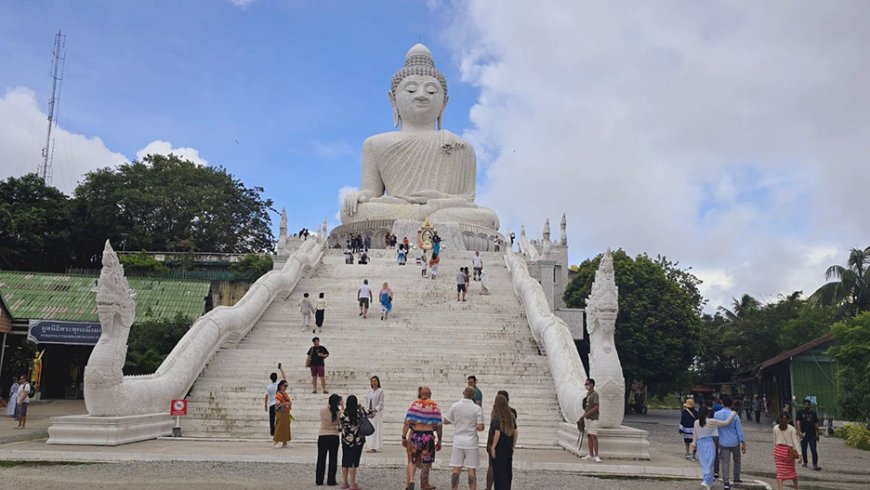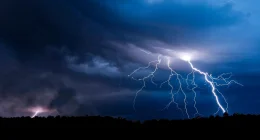The 45-meter-tall ‘Big Buddha’ statue, a well-known landmark atop the Nakkerd hills between Kata and Chalong, may be facing demolition following legal action against the foundation responsible for its construction. The Royal Forest Department has taken legal steps, alleging that the statue’s construction contributed to a deadly landslide on August 23, which tragically claimed 13 lives and injured 19 others.
Legal Action and Investigation
The Royal Forest Department, led by Deputy Chief Bannaruk Sermthong, has filed a formal complaint with Karon Police against the Foundation of Phra Ming Monkul Sattha. The foundation is accused of causing the landslide by clearing trees on the hilltop to build the 135-tonne Buddha statue. According to the department’s initial investigation, this deforestation, combined with the heavy rainfall, destabilized the area, leading to the catastrophic event.
Controversial Construction on Sacred Ground
The ‘Big Buddha’ is part of Wat Kittisankaram, a temple that had initially received permission to use 15 rai of land within the Khao Nakkerd National Forest Reserve for the statue’s construction. However, the foundation reportedly expanded the project beyond the permitted area, encroaching on an additional five rai of land. Despite the Royal Forest Department’s warnings and a formal letter issued in December last year prohibiting further construction, the foundation allegedly continued to build.
Environmental and Safety Concerns
Deputy Chief Bannaruk highlighted that the unauthorized expansion of the construction site into a Watershed class 1A area—a highly sensitive zone—exacerbated the risk of landslides. “This disaster would not have occurred if the construction had adhered to the original plan and stayed within the permitted boundaries,” he noted. The department has since filed a complaint to seize the encroached forest area and plans to install signs prohibiting entry.
Potential Demolition of the ‘Big Buddha’
In light of the ongoing investigation, there is a possibility that all structures associated with the unauthorized construction, including the ‘Big Buddha’ statue itself, may be demolished. A committee is being established to further investigate the case, and the final decision will depend on the outcome of these proceedings.
Landslide Warning System Failure
Adding to the tragedy, the Department of Mineral Resources admitted that the landslide warning station near the site was out of order at the time of the disaster. This malfunction prevented any warnings from reaching residents at the base of the hill, who were caught completely unaware. The department has committed to fixing the warning system by next month, as the region is expected to experience continued heavy rainfall through October.
Conclusion
The potential demolition of the ‘Big Buddha’ statue underscores the serious consequences of unauthorized construction and environmental mismanagement. As the investigation continues, the situation serves as a stark reminder of the delicate balance between cultural development and environmental preservation. The tragic events that unfolded on August 23 highlight the urgent need for stricter enforcement of construction regulations, especially in environmentally sensitive areas.








